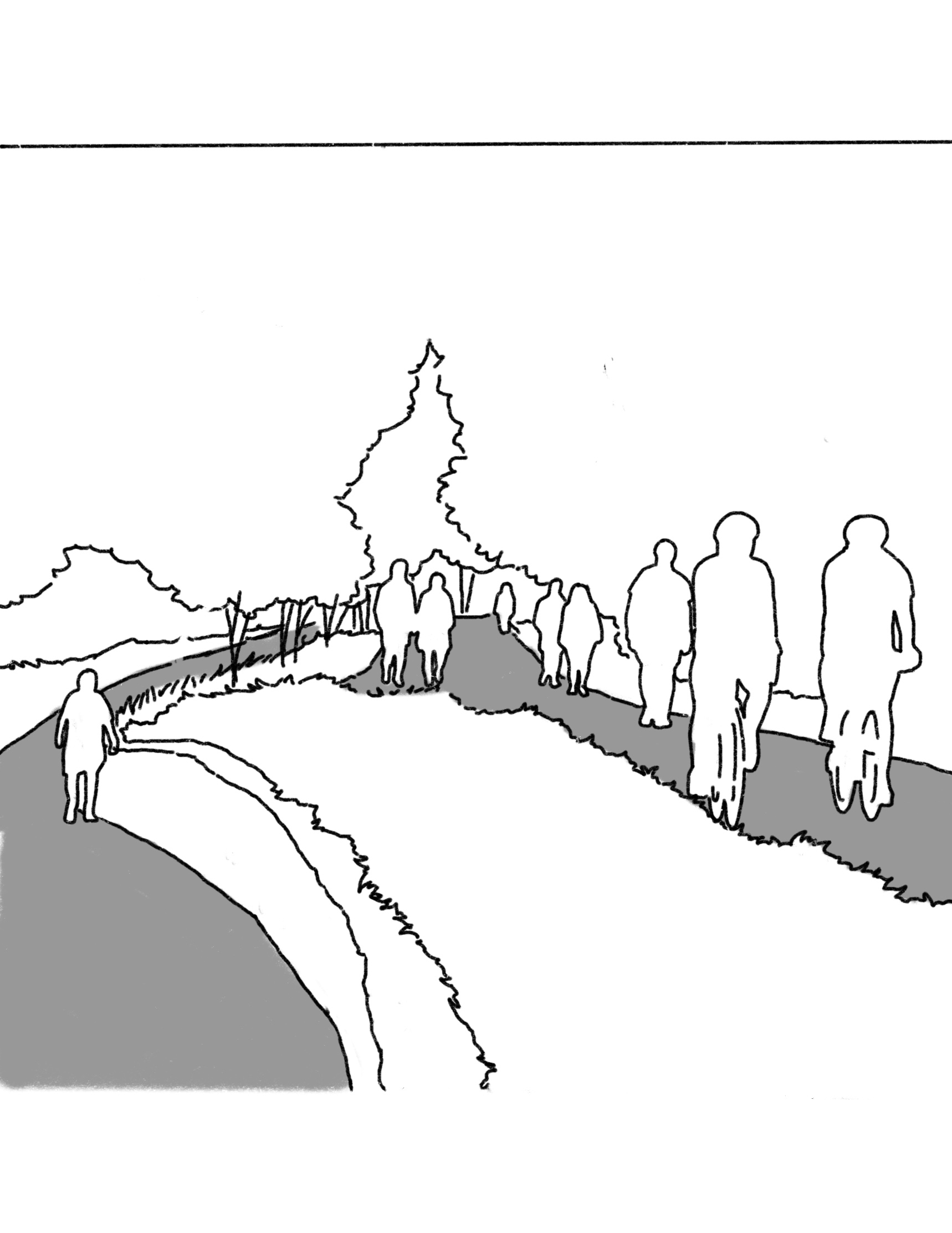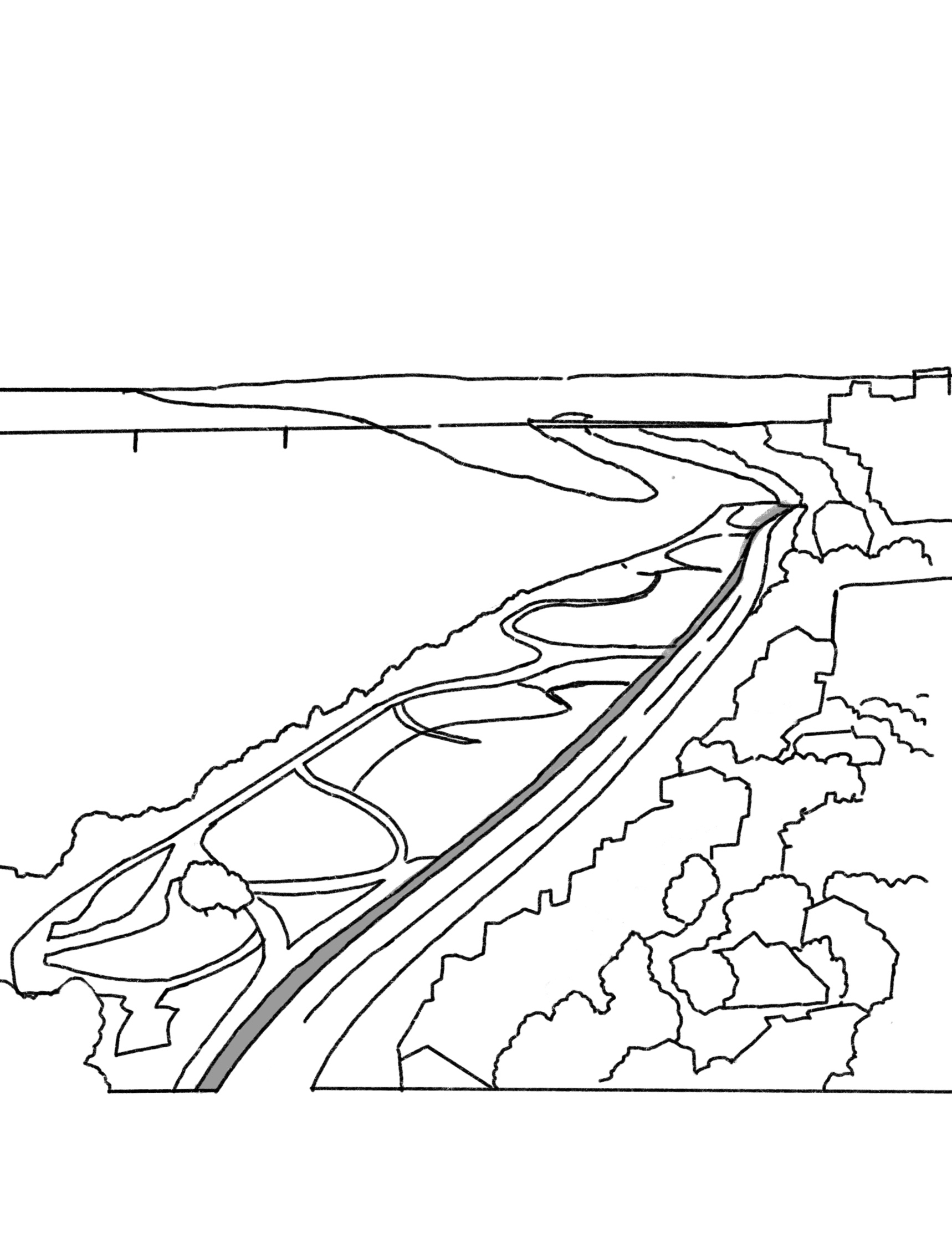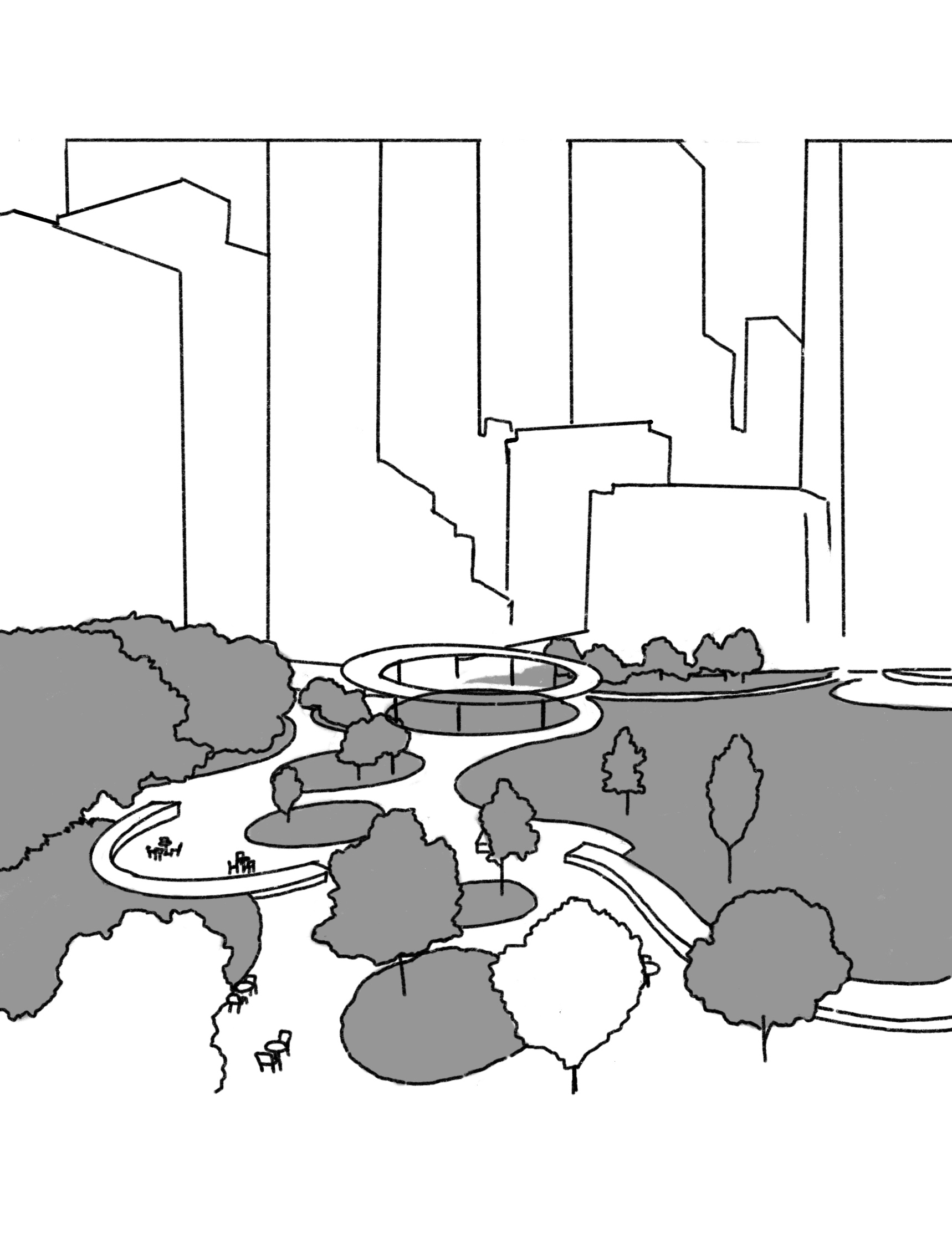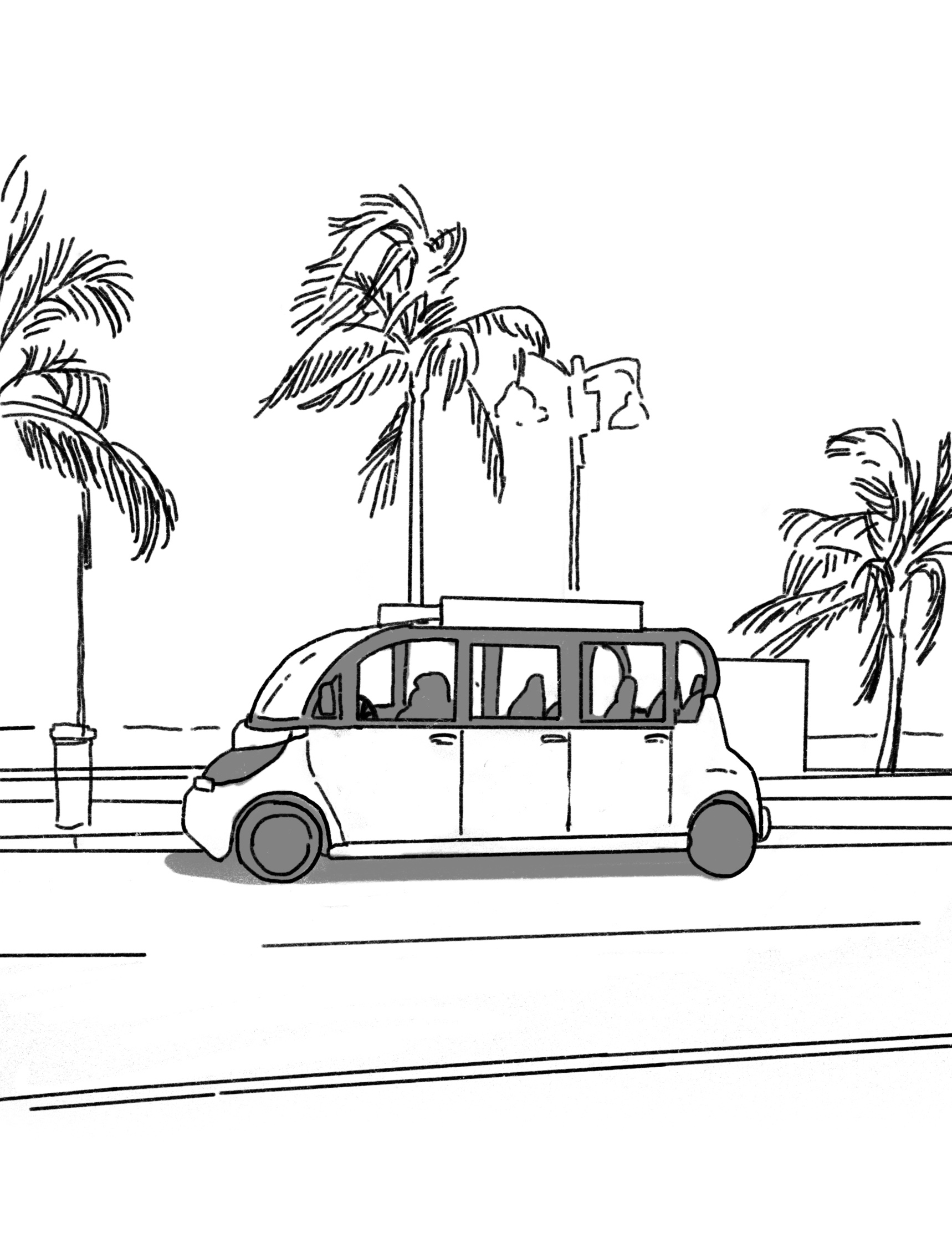Strategy
Mitigation
Enable No-Engine Mobility
Gas-powered vehicles are a major contributor to global GHG emissions. These emissions can be lowered by reducing dependence on vehicular transportation through improved walkability and bikeability. Additionally, designers can integrate micro-mobility services like e-bikes, and/or charging stations for electric vehicles.
Make safe and convenient person-powered transportation networks
Options
…by adding, improving, or connecting pedestrian pathways, bikeways, trails, or multi-use paths.
…by converting a street to a car-free or pedestrian street.
…by widening sidewalks, improving pedestrian accessibility, and other Vision Zero design practices.
…by creating dedicated bike lanes on shared streets.
…by maximizing humane density in urban designs and master plans.
Case Study
The Katy Trail is a 20-year-old rails-to-trails project that repurposed 3.5 miles of former rail bed running from uptown, near downtown, northward. In car-centric Texas, the trail is well used and well loved; visitation is around 2 million per year. The trail offers a car-free link from the American Airlines Center all the way to the Mockingbird Station retail complex near SMU’s campus. It has separated paths—one for wheels, and one for walkers and runners. It is being extended into The Loop Dallas.

Make safe and convenient no-engine parking/charging
Options
…by providing bike parking near building entrances or adjacent to cycling paths.
…by siting shared micromobility programs (such as bikeshare racks, scooter areas, etc.)
…by integrating accessible EV charging infrastructure.
Case Study
In Tom Lee Park, SCAPE, along with architects Studio Gang, integrated two new 10-bike racks run by the local bikeshare, Explore Bike Share. Both sit just off of the fast path—a 0.6mi shared use path along the eastern side of the park, grade separated from four lane Riverside Drive. One is near the picnic deck at the southern end, and the other is at the playground area, toward the center.

Reduce car convenience
Options
…by implementing a road diet or lane reduction to reduce speeds.
…by eliminating parking spaces (without replacement).
…by replacing free parking with paid parking.
Case Study
Pacific Plaza was one of the five parks in downtown Dallas recently created from surface parking lots. At this site, SWA Group folded James W. Aston Park, a traffic island with mature trees, into the former private parking lot with the closure of one block of a four-lane street to net 3.5 acres. The park was built on grade, replacing almost 300 parking spaces.

Link to shared transportation modes
Options
…such as mass transit (rail, train, electric bus).
…such as internal mobility services (electric campus-wide shuttle or shared mobility service).
Case Study
The A1A Streetscape Improvement Project enhances the pedestrian experience in a section of the main road running along much of South Florida’s beachfront. Long involved with the beach, EDSA designed the streetscape. Separately, the city contracted with Circuit, a neighborhood electric vehicle (NEV) company to provide last mile, ad-subsidized free rides to beachgoers. It is called the LauderGo! Micro Mover. The 5-passenger vehicles patrol a fixed route on A1A and are hailed via smartphone app, connecting passengers with the new inland high-speed train, parking, and elsewhere.
